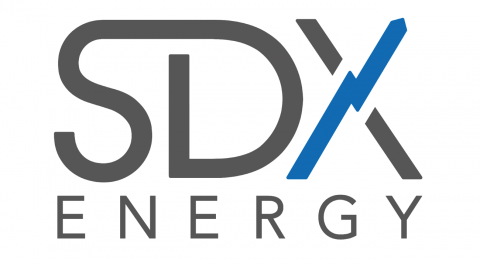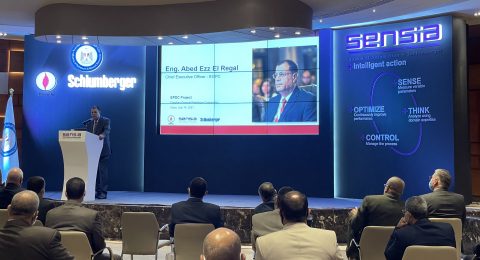”We are targeting the production of 22 thousand barrels of oil per day during the coming five years,” stressed Eng. Abdul Khaleq El Tahawy, Chairman of PetroSannan Company, in his interview with Egypt Oil & Gas newspaper
In December 2006, the Ukrainian company Naftogaz began to feel the pace within the Egyptian petroleum sector after signing an agreement for oil drilling and exploration with the Egyptian General Petroleum Corporation (EGPC). It was considered a grant singing about $7 million for 3 years; afterwards it was renewed for another two years.
Before entering the Egyptian market, Naftogaz went into Abu Dhabi’s market but it didn’t reach the desired goals there. Besides, the Ukranian Company tried again its luck in Libya but unfortunately it wasn’t a successful penetration. However, when it came to Egypt for exploring and discovering in Abo Senan in the Western Desert, it successfully had a great commercial discover which was about 2500 barrels per day and approximately 9 million cubic feet gas per day.
Naftogaz is considered one of the most important petroleum companies in Ukraine and it is a state-owned company which is concerned with extraction, transportation, and refinement of natural gas and crude oil. It produces alone 30% of the Ukrainian petroleum production that is why it is placed between the major companies in Ukraine in specific, and worldwide in general.
Following Abo Senan discovery, proceedings began to establish the joint venture company which afterwards named PetroSannan. Eng. Abdul Khaleq El Tahawy, former operation manager at SUCO, was named the Chairman of the new company PetroSannan. Besides, Eng. Gharib Abdel Atti was appointed as the Operation Manager and Eng. Ismael Ahmed took the rank of the Exploration Manager while Adel Sherif became the Director of Administrative Affairs.
That occurred last October when the company began implementing the development plans to enhance the production rates in the field of Abo Senan.
In the beginning, what is your impression about the nascent company in the petroleum sector, PetroSannan?
I think it is a promising company. Since I have taken control after the company’s establishment last October and we, the management, have been working with the foreign partner on how to achieve an increase in the rates of production as a complement for the petroleum sector’s successful plan.
Are there any production facilities that PetroSannan relies on through sister companies?
Certainly, this is the petroleum sector’s strategy that the producing company should use the production facilities of the neighbour company until the completion of the establishment of the production pipelines for the transfer of the quantities produced. Indeed, there are about five producing wells ready to produce oil and gas, including a well produces actually 1200 barrels of oil per day. When the expansion of the production was done, it produced 2500 barrels in the concession of Abo Senan in Alam El Shawish area in the Western Egyptian desert.
Are you planning to establish production facilities soon?
The foreign partner has applied a specific budget for this reason. In addition, they will set up the production line for only one well, which is HG34-3 well that currently produces 1200 barrels of oil till the end of the year 2010. Thereafter, there will be a budget for the other wells and consequently the produced quantities will be placed on the production map.
What are the major obstacles that faced PetroSannan in the exploration and production phases?
I am not exaggerating when I say that there are no obstacles or impediments that hinder the company while operating. Thus, the production was rapid and quite impressive and there were even no water wells so far. In fact, the facilities of the General Petroleum Company (GPC) played a crucial and active role in transferring the production of the company which describes the harmony cooperation between the petroleum sector companies.
What is the total volume of the company’s production?
We try to maximize our rates of production, but currently the actual production is 1200 barrels of crude oil per day and there is another well produces about 500 barrels of oil per day and it will continue until the end of the year. Moreover, there are undiscovered quantities of gas due to the lack of facilities. Hence, we are trying now to set up such facilities for the production of gas in the fastest time.
What is the budget set for establishing such facilities?
About $13 million to set up production facilities including storage tanks, which will cost approximately $2.5 million in addition to other supplements.
What is the number of your drilled wells so far?
They are sixteen wells, six of which are currently producing; HG-1 to HG-6.
Regarding the drilling plan of PetroSannan, what is the number of wells to be drilled in the future?
There is an agreement with the foreign partner to drill 87 exploratory wells during the next five years. In the case of getting positive indicators, development wells will be drilled. The plan set by the foreign partner aimed at producing about 22 thousand barrels of oil from those wells, until 2014.
Is there an expansion plan to get new concessions?
Meanwhile, Naftogaz is heading towards the Eastern Desert in the Mahareeth Valley. In case of finding out a new commercial discovery, it will be linked to the existing joint-venture company, PetroSannan.
Are you focusing in the production of oil at the expense of gas?
No, we are not prejudiced to any of them. There is a parallel plan between producing oil and gas as there are wells that already exist in the concession area have large quantities of gas. For example, there is Kareema X3 well which produces about 10 million cubic feet of gas per day and there is Maleka 1X well produces 0.5 million cubic feet of gas. Besides, Tammam well produces about 6 million cubic feet gas per day. Nevertheless, we are waiting for the establishment of production facilities and processing units for gas production, which will be added to the national network of gas and then increases the reserves and maximize the value of gas in Egypt.
Are there any other plans developed by the company?
We are working on the development of the whole place and you know that we are now entering the phase of compilation the teamwork after creating the organizational structure and therefore we are still in the process of preparing for it.
What is your overall budget?
The annual budget is approximately $64 million. As for the current fiscal year budget, it is about $40 million and the reason for the reduction is because of the non-establishment of the facilities so far. However, the facilities will provide us a lot, as the distance between the wells and facilities of GPC is about 32 kilometres, which cost us extra fees for transportation.
In your opinion, how can we attract foreign investments into the local market?
The current policy adopted by the ministry towards handling foreign investments shall be considered the best. According to what Eng. Sameh Fahmy said that the ministry’s main concern is to create the perfect investment climate through providing the needed facilities, the foreign companies need to ease their work in the Egyptian land. We can see the result out clear with the more foreign companies entering the Egyptian market everyday and bringing more money into our market.
What are the shining investments spots in Egypt in the coming period?
The Western Desert is considered at the top of the list, plus it is the top producing area in Egypt now. So you’ll find most companies are seeking more acquisitions in the Western Desert, and a proven proof Apache’s move to buy all BP’s assets in the Western Desert.
Do you think the Western Desert gets he whole share alone?
I do not think so at all, as for each area there are specialized companies and investors, even the service companies are divided between land services and deep water services.
What are the upcoming bids offered by PetroSannan?
All the upcoming acquisitions will be done through bid rounds, but there’s nothing to mention in the time being.
What are the service companies appointed by PetroSannan in the current operations?
Tanmia is the only service provider for us now, a one-stop shop company, which handles the Startup operations.
Can you tell us about the rigs used by Tanmia in your fields?
The two rigs are called EDC17, owned by Egyptian Drilling Company (EDC), and SINOTHARWA-11, owned by the SinoTharwa Drilling Company.
What are the future plans for PetroSannan?
To provide job opportunities for the young fresh graduated engineers, this is the main concern to the Petroleum Ministry in the time being.
What are the HSE rules in PetroSannan?
Safety is considered is a major apprehension that our company deals with it with most possible ways. We asked the foreign partner that after they provide the production facilities that we’ll apply all the needed HSE standards to guarantee the best care for our HSE.
What is in the future of PetroSannan?
The human factor is our foremost target as I said before. We will provide venues for our employee close to the fields, also to present suitable working shifts, and to reduce the burden of travel transportations, signing more contracts with the workers, and most importantly to use other expertise from fellow companies to gain more experience that will lead PetroSannan to more achievements.
What are the main features of the contract between EGPC and PetroSannan’s foreign partner?
Initially, it was a 50-50 production share contract, which shows positively the capabilities of the Egyptian negotiators to bring the most benefit for Egypt. But you must put in mind that if it was not for the facilities provided by EGPC for the foreign partner, they would not have come to our country from the first place.
By Tamer Abdel Aziz – Shady Ahmed







